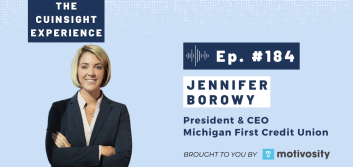What’s so wrong with marketing to old people?

In the classic science fiction movie Logan’s Run, when you hit 30, you died. It’s almost like that in marketing. Anyone in the 18-35 year old demographics is treated like golden gods. If you’re in your late 30s and 40s you are still a prime target because you have kids and debt (those things seem to go together).
But once you turn 50, forget about it. You’re old. You have nothing to offer marketers. And if you happen to be over 60 you probably aren’t even on a marketing database (unless it’s for Viagra or Denny’s).
So what’s so wrong with marketing to old people (I’ll leave defining what “old” is to you)? Consider this statistics:
- In entertainment, apparel and other important sectors, those over 50 account for close to half of all spending (AARP).
- Those over 50 hold over 80% of the country’s personal net worth (AARP).
- Baby Boomers have more discretionary income (wealth) than any other age group (Baby Boomer Magazine).
- The 55- to 64-year-old age group, the oldest of the boomers, has become the cohort most likely to buy a new car, according to a recent study by the University of Michigan’s Transportation Research Institute (BusinessWeek).
- A quarter of 49 to 67 year old adults are “likely to buy a second home” to use in retirement, according to Wakefield Research (Next Avenue).
These numbers show credit unions and banks should not write off any generation, even the Boomers and Matures. Just as there is value in reaching Gen. X and Y, there is also equal opportunities in deepening your penetration with older consumers. One key is to remember that your targets match your strategy.
Yes, targeting Millenials is critical—we’re not saying they aren’t important. From a strategic and lending perspective it’s paramount your financial institution reach young people. Everywhere you turn these days—from American Banker to Credit Union Times—there are articles about reaching today’s youth. Those are well and good. But let’s not focus so much attention on the kids that we forget the parents (or grandparents).
Here are some steps you can take to reach Boomers and Matures at your bank or credit union:
—Matures
(1) Emphasize investments—They have a ton of money. But do they have it with you? Some of it could actually be in freezers and mattresses (not to mention Edward Jones).
(2) Market loyalty—Your older customers or members have probably been with you the longest. Reward that long-term relationship with financial products that reach the entire household.
(3) Consider your branches—Your branch is where you and your older consumers do business. While having high-tech branches is certainly the trend these days, don’t lose the personal touch of a smile and warm cup of coffee.
—Boomers
(1) Emphasize simplicity—In a recent survey, 58% of Boomers said they would prefer more free time than more money. Boomers live incredibly busy lives. Show how your bank or credit union can simplify that lifestyle.
(2) Market retirement—The retirement years are just around the corner (if not already here) for Boomers. They can taste it, touch it and smell it. And it scares them. According to Charles Schwab, 60% of Boomers have less than $100,000 saved for retirement and 36% have less than $10,000. Boomers 401(k)s are now 201(ks).
(3) Consider their spending—Boomers will spend more in retirement than Matures. That is a fundamental shift in the generations. They will also continue to borrow. Tap into their financial needs with loans for their dreams (Harleys, mountain home, vacation with the grandkids).
Our society tends to overvalue youth and devalue old age. At financial institutions we do so at our own risk.





